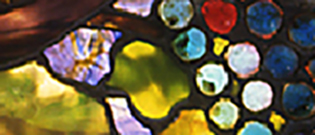Celery stalks
Glazed white clay Tiffany Studios, New York City, 1902–32Marks: [conjoined LCT] / P. 1343 / L.C. Tiffany – Favrile Pottery
H. 11 1/4 in. (74-026) Audio GuideLouis Comfort Tiffany (1848–1933) debuted his pottery to an international audience at the Louisiana Purchase Exposition in St. Louis in 1904 after being inspired by ceramics he saw in Paris in 1900. At the time, there was an unprecedented American interest in ceramics as decorative art. In Tiffany’s pottery, one is struck by the artist’s ability to produce what amounts to representational sculpture, often nearly life-size, of the natural world. In every case, the actual function of the piece is trumped by its aesthetic quality as sculpture. By this artistic achievement, the works are made universally comprehensible. Fruits, flowers, grasses and vegetables—such as in the celery vase pictured here—are depicted in highly recognizable, quickly-comprehended images that represent the real world with a high degree of immediacy. On the other hand, Tiffany’s brilliant manipulation of naturalism becomes apparent upon further examination. When viewed at eye level, the celery vase—or, if you will, the celery sculpture—becomes not only layered stalks with leaves spreading out at the top, but a Corinthian column—an impression promoted by the shiny white glazed surface and by the classical stillness of the architecture as well.



